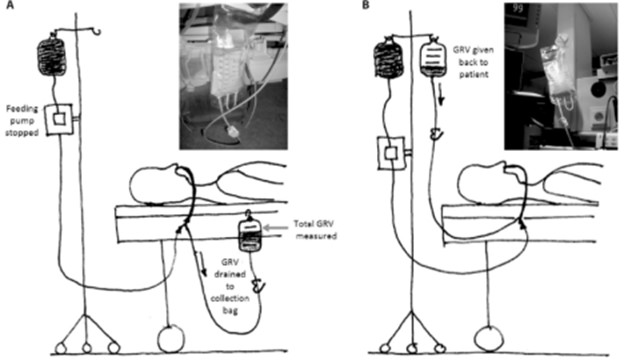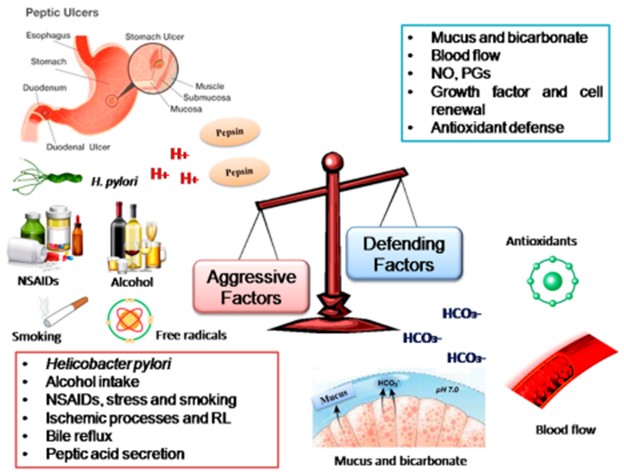A nurse is caring for a client who receives intermittent enteral feedings through an NG tube. Before administering a feeding, the nurse should measure the gastric residual for which of the following purposes?
To confirm the placement of the NG tube
To determine the client's electrolyte balance
To remove gastric acid that might cause dyspepsia
To identify delayed gastric emptying
The Correct Answer is D
The nurse should measure the gastric residual before administering a feeding to identify delayed gastric emptying. Gastric residual refers to the volume of formula or contents remaining in the stomach from the previous feeding. Measuring gastric residual helps assess how well the client's stomach is emptying and can indicate if there is delayed gastric emptying.
By measuring gastric residual, the nurse can:
● Determine if the stomach has adequately emptied from the previous feeding. ● Assess the client's tolerance to enteral feedings.
● Detect signs of delayed gastric emptying, which can be indicative of gastrointestinal motility issues or other complications.
● Adjust the feeding rate or make other modifications to the enteral feeding plan based on the amount of residual volume.

Confirming the placement of the NG tube is typically done using other methods, such as an X-ray, pH testing, or auscultation of air insufflation. Gastric residual measurement primarily serves the purpose of assessing gastric emptying, rather than confirming tube placement.
While electrolyte imbalances can be monitored in the overall care of a client receiving enteral feedings, measuring gastric residual specifically focuses on assessing gastric emptying and feeding tolerance, rather than determining the client's electrolyte balance.
Removing gastric acid that might cause dyspepsia is not the primary purpose of measuring gastric residual. Gastric residual measurement aims to evaluate the volume of the previous feeding and assess gastric emptying, rather than focusing on dyspepsia specifically.
Nursing Test Bank
Naxlex Comprehensive Predictor Exams
Related Questions
Correct Answer is A
Explanation
The purpose of the stool guaiac test, also known as the fecal occult blood test (FOBT), is to identify the presence of hidden or occult blood in the stool. This test is commonly performed to screen for gastrointestinal bleeding, which can indicate various conditions such as colorectal cancer, ulcers, polyps, or other sources of bleeding in the digestive tract.
The other options mentioned are not specifically detected by the stool guaiac test:
Parasites: The stool guaiac test does not directly detect parasites in the feces. Parasite testing requires a different type of analysis, such as microscopic examination or specialized laboratory tests.
Bacteria: The stool guaiac test does not specifically detect bacteria in the feces. If a bacterial infection is suspected, other diagnostic tests such as stool culture or polymerase chain reaction (PCR) may be ordered.
Fat: The stool guaiac test is not designed to detect fat in the feces. If there is a concern about fat malabsorption, other tests such as fecal fat analysis or Sudan stain may be used.
Correct Answer is C
Explanation
Ibuprofen is a nonsteroidal anti-inflammatory drug (NSAID) that can increase the risk of developing peptic ulcers. It can cause irritation and damage to the lining of the stomach and small intestine, leading to the formation of ulcers.

The other options may not directly contribute to the development of peptic ulcers:
History of bulimia: While repeated vomiting can irritate the esophagus, it is less likely to directly cause peptic ulcers.
Consuming spicy foods 5 to 8 times weekly: Spicy foods can exacerbate the symptoms of existing peptic ulcers, but they are not considered a direct risk factor for their development.
Drinking green tea: Green tea is generally considered to have health benefits and is not known to be a risk factor for peptic ulcers.
Whether you are a student looking to ace your exams or a practicing nurse seeking to enhance your expertise , our nursing education contents will empower you with the confidence and competence to make a difference in the lives of patients and become a respected leader in the healthcare field.
Visit Naxlex, invest in your future and unlock endless possibilities with our unparalleled nursing education contents today
Report Wrong Answer on the Current Question
Do you disagree with the answer? If yes, what is your expected answer? Explain.
Kindly be descriptive with the issue you are facing.
